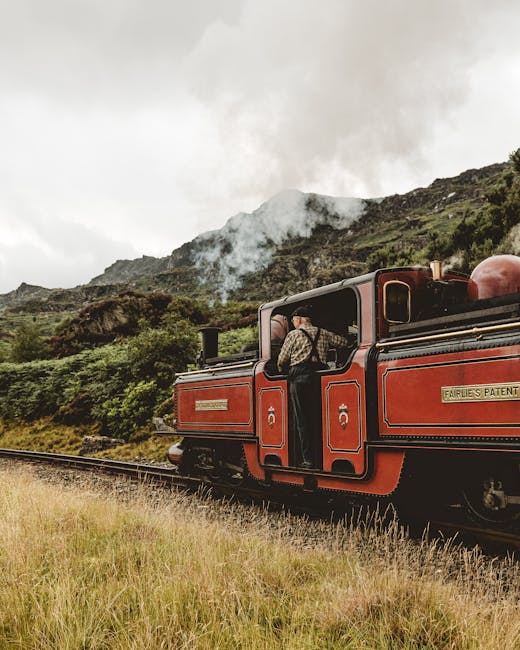A History of Pittsburgh’s Steel Industry
Pittsburgh, Pennsylvania, is often synonymous with steel. As one of the most important industries in American history, the steel industry in Pittsburgh not only defined the city but also played a crucial role in shaping the country’s economic strength during the 19th and 20th centuries. This blog post delves into the rich history of Pittsburgh’s steel industry, exploring its origins, growth, decline, and lasting legacy.
Origins of Steel Production in Pittsburgh
The roots of Pittsburgh’s steel industry can be traced back to the early 19th century. In 1816, George Anschutz established the first rolling mill in the city, signaling the beginning of a new era. Pittsburgh’s strategic location at the confluence of the Allegheny, Monongahela, and Ohio Rivers made it an ideal hub for transporting raw materials and finished products, further fueling industrial growth.
By the 1850s, Pittsburgh was already emerging as a leader in iron production, thanks in part to its proximity to coal and iron ore deposits. The city’s burgeoning iron industry set the stage for the transition to steel, a stronger and more versatile material that would soon revolutionize manufacturing and construction.
The Rise of the Steel Titans
The late 19th century saw the rise of prominent industrialists who would transform Pittsburgh into the steel capital of the world. Andrew Carnegie is perhaps the most famous of these figures. In 1875, Carnegie opened the Edgar Thomson Steel Works in Braddock, Pennsylvania, utilizing the Bessemer process—a revolutionary method that dramatically increased steel production efficiency.
Carnegie’s innovations and business acumen allowed him to dominate the industry, ultimately forming the Carnegie Steel Company. By the turn of the century, Carnegie Steel was responsible for a significant portion of U.S. steel production. In 1901, Carnegie sold his company to J.P. Morgan, leading to the creation of U.S. Steel, the first billion-dollar corporation in American history.
Technological Innovations and Their Impact
Pittsburgh’s steel industry was not only defined by its industrialists but also by its technological advancements. The introduction of the open-hearth furnace and the basic oxygen process further boosted production capabilities. These innovations enabled Pittsburgh to supply the growing demands of the rapidly industrializing nation, contributing to the construction of iconic structures such as the Brooklyn Bridge and the Empire State Building.
The Golden Age of Steel
The early to mid-20th century marked the golden age of Pittsburgh’s steel industry. During this period, the city produced nearly half of the nation’s steel. The industry provided employment to tens of thousands of workers, and Pittsburgh became known as the “Steel City.” The steel produced in Pittsburgh was essential to the success of the United States during both World Wars, providing the necessary materials for ships, tanks, and weapons.
Steel production peaked in the 1940s, with Pittsburgh’s mills operating around the clock to meet wartime demands. The post-war era saw continued prosperity, with new infrastructure projects and the growth of the automobile industry driving demand for steel.
The Decline of the Steel Industry
Despite its success, the steel industry in Pittsburgh began to decline in the latter half of the 20th century. Several factors contributed to this downturn, including increased competition from foreign steel producers, rising labor costs, and outdated manufacturing facilities. The 1970s and 1980s were particularly challenging, with many mills closing and thousands of workers losing their jobs.
By the 1980s, Pittsburgh’s economy was in crisis, and the city faced the daunting task of reinventing itself. However, this period of adversity also sparked a transformation, as Pittsburgh shifted its focus from heavy industry to education, healthcare, and technology.
The Legacy of Pittsburgh’s Steel Industry
While the steel industry no longer dominates Pittsburgh’s economy, its legacy endures. The steel magnates of the past invested heavily in the city’s cultural and educational institutions, leaving a lasting impact that continues to benefit residents today. Carnegie Mellon University, the University of Pittsburgh, and the Carnegie Museums are just a few examples of this enduring legacy.
Pittsburgh has also embraced its industrial heritage, with former steel sites being repurposed into vibrant neighborhoods and cultural attractions. The city’s resilience and ability to adapt have made it a model for economic transformation in post-industrial America.
Conclusion
The history of Pittsburgh’s steel industry is a story of innovation, growth, and resilience. From its humble beginnings in the early 19th century to its rise as a global steel powerhouse, Pittsburgh’s industrial legacy continues to shape the city and its people. While the industry may have declined, the spirit of innovation and determination that fueled Pittsburgh’s steel success lives on, inspiring new generations to build upon the foundation laid by those who came before.
As Pittsburgh continues to evolve, it remains a testament to the enduring impact of the steel industry on American history and the potential for renewal in the face of economic challenges. For anyone visiting the city, a journey through its industrial past offers a fascinating glimpse into a pivotal chapter in the story of America’s industrial might.

